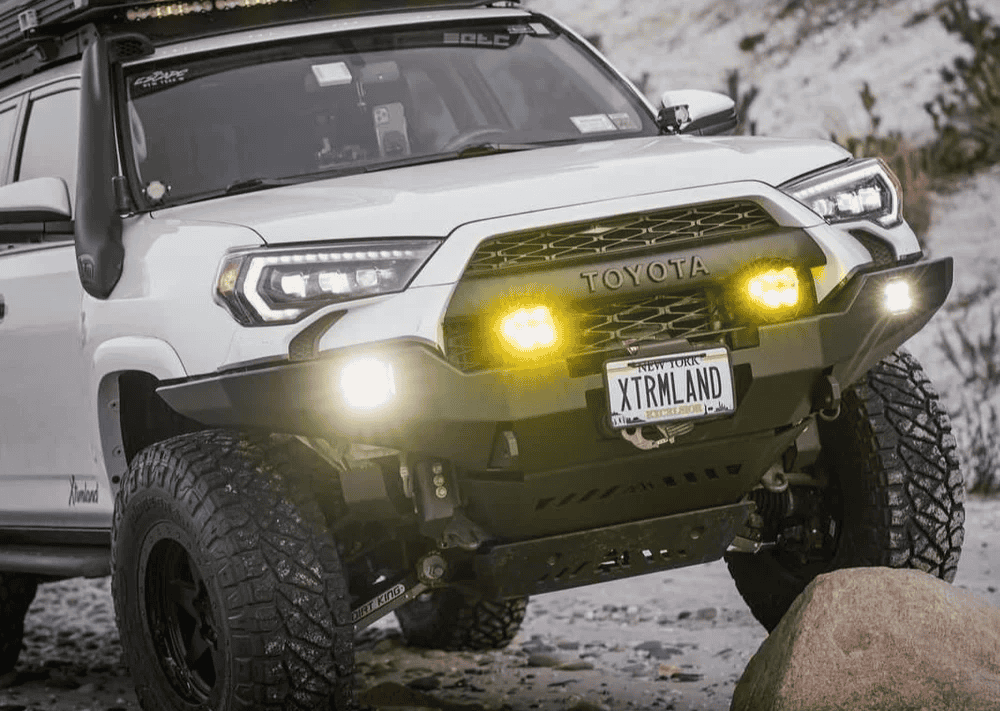Overland Vehicles

Truck customization starts with purpose. Daily driver with weekend trail time, dedicated tow rig, or long range travel truck each demand different choices. A clear goal steers everything from tire size to gear ratio. Most projects begin with the fundamentals: suspension, wheels and tires, brakes, gearing, and protection. From there, owners layer in lighting, recovery gear, storage, interior comfort, and power systems to support travel, tools, or recreation. The best builds feel cohesive because parts are selected to work together rather than stacked at random.
Suspension decisions set the tone. A modest lift with quality dampers can improve comfort and control without harshness. Heavier springs support added weight from armor, racks, or campers. Alignment, bump travel, and shock tuning matter as much as ride height. Wheels and tires follow. Diameter, width, and offset affect clearance and scrub radius. All terrain tires balance grip and noise for mixed use while mud terrain designs favor soft dirt and rock at the cost of road manners.
Power and drivability upgrades aim for usable torque and dependable cooling. Intakes, exhaust systems, and calibration work can sharpen throttle response, but the greatest gains often come from correct gearing when larger tires go on. Proper ratios restore shift points and reduce strain on the transmission. Cooling upgrades support slow speed trail work and towing in hot weather. Big brake kits or upgraded rotors and pads shorten stopping distances, especially on heavier builds.
Protection adds confidence on rough tracks. Front and rear bumpers improve approach and departure angles while adding solid recovery points. Skid plates guard the oil pan, transmission, and transfer case. Rock sliders keep door sills from taking a hit. Lighting upgrades enhance visibility after dark. A good plan covers three zones: wide low light that floods the trail margins, a forward driving beam that projects downrange, and a backlight for camp setup or trailer work.
Storage and organization shape daily use. Bed racks carry tents, kayaks, or recovery boards. Drawer systems keep tools and spares secure and easy to reach. In the cab, seat back panels, under seat storage, and simple tie downs prevent rattles and clutter. Electrical systems tie it together. A dual battery or lithium house battery with a DC to DC charger keeps fridges, radios, and lights powered without risking the starter battery. Clean wiring with proper fusing is essential to safety and long term reliability.
Choose spring rates for real payload, not a guess. If armor, camper shells, or rooftop tents are planned, select components that are rated for that constant load. Aim for balanced rake to maintain braking stability and headlight aim. Keep an eye on control arm geometry and consider upper control arms when adding lift so alignment stays within spec. Finally, match tire size to travel. A slightly smaller tire with quality shocks often outperforms a larger tire with poor damping.
Modern engines respond best to thoughtful calibration that respects factory safeguards. Look for tunes that reduce heat and knock rather than chase peak numbers. Pair intake and exhaust with high quality filtration and sealed connections to keep dust and water at bay. If towing, transmission tuning and additional cooling can lengthen service life and improve shift quality. Always weigh warranty considerations before flashing any control module.
Travel focused trucks benefit from range, redundancy, and repairability. Extra fuel capacity or a spare can frees route planning. Onboard air simplifies pressure changes and field repairs. A compact tool roll, fluids, and a spare parts kit create peace of mind. Navigation, communications, and recovery gear should be mounted where they can be reached quickly. Keep weight low and centered to protect handling and braking.
The smartest builds start with a parts roadmap and a staged budget. Install foundational items first, like suspension and gearing, then refine with armor and accessories. Weigh the cost of premium components against the real benefits they deliver, such as serviceable shocks or corrosion resistant hardware. Document weights as you add gear to stay within axle and gross limits. Proper aiming for auxiliary lights and adherence to bumper and fender rules keep the truck compliant on public roads.
Finally, set a maintenance rhythm. After any major change, retorque fasteners, refresh alignment, and inspect brake lines and steering joints. Track tire pressures for both highway and trail. Reliable trucks are not accidents; they are the product of careful setup and follow through.
To see how travel builds translate from plan to pavement and dirt, browse Overland rigs by OZK. For tailored fabrication and integrated systems, review our Custom overland upfit process. Curious about our approach and customer experience, learn more at Why choose OZK Customs.
Tell us how you drive, what you tow, and where you travel. We will translate your goals into a balanced plan that covers suspension, wheels and tires, power, protection, lighting, storage, and electrical. Our team designs for daily comfort, weekend exploration, and long range trips without compromising safety or reliability.
OZK Customs builds recreational adventure vans, overland rigs, towable solutions, commercial vans, and custom fabrications. From partial upfits to complete builds, our Fayetteville shop pairs design with precision craft so your rig works the way you live.
Ready to map a build that fits your life and your terrain? Tell us how you drive, what you tow, and where you travel. OZK Customs will blueprint your suspension, storage, power, and protection so the finished truck feels composed on pavement and confident off road. Share a few details and our team will build a clear plan, timeline, and quote.
ADDRESS:
6159 E Huntsville Rd, Fayetteville, AR 72701
PHONE:
(479) 326-9200
EMAIL:
info@ozkvans.com